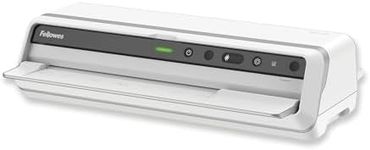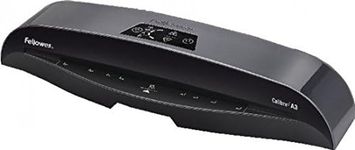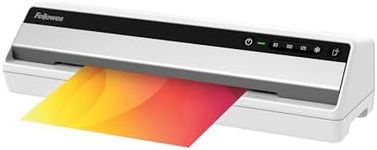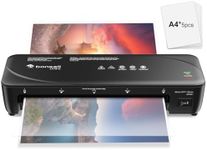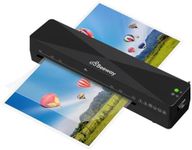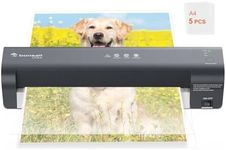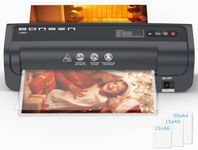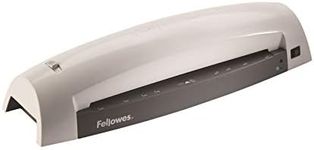Buying Guide for the Best Laminating Machine
Choosing the right laminating machine can be a bit overwhelming, but with the right guidance, you can find the perfect fit for your needs. Laminating machines are used to protect and preserve documents, photos, and other important papers by encasing them in a plastic film. When selecting a laminating machine, it's important to consider several key specifications to ensure you get the best performance and results for your specific requirements.Laminating WidthLaminating width refers to the maximum width of the document that the machine can laminate. This is important because it determines the size of the items you can laminate. Laminating machines typically come in various widths, such as 9 inches for standard documents, 12 inches for larger items, and even wider for specialized uses. If you mostly laminate standard-sized documents, a 9-inch machine will suffice. However, if you need to laminate larger items like posters or menus, consider a machine with a wider laminating width.
Laminating SpeedLaminating speed indicates how quickly the machine can laminate a document, usually measured in inches per minute. This is important for productivity, especially if you have a large volume of items to laminate. Laminating machines can range from slower speeds of around 10 inches per minute to faster speeds of 30 inches per minute or more. If you only laminate occasionally, a slower speed may be acceptable. However, for frequent or high-volume laminating, a faster machine will save you time and increase efficiency.
Warm-Up TimeWarm-up time is the amount of time it takes for the laminating machine to be ready for use after being turned on. This is important for convenience and efficiency. Warm-up times can vary from as little as 1 minute to over 5 minutes. If you need to laminate documents quickly or on short notice, a machine with a shorter warm-up time is preferable. For occasional use, a longer warm-up time may not be as critical.
Pouch Thickness CompatibilityPouch thickness compatibility refers to the range of laminating pouches (measured in mils) that the machine can handle. This is important because it affects the durability and rigidity of the laminated item. Common pouch thicknesses range from 3 mils to 10 mils. Thicker pouches provide more protection but require a machine that can handle them. If you need basic protection for everyday documents, a machine that handles 3-5 mil pouches will be sufficient. For more durable lamination, such as for ID cards or frequently handled documents, look for a machine that can handle 7-10 mil pouches.
Temperature ControlTemperature control allows you to adjust the heat settings of the laminating machine. This is important for achieving the best results with different types of laminating pouches and materials. Some machines offer preset temperature settings, while others provide adjustable controls. If you laminate a variety of materials, an adjustable temperature control will give you more flexibility and better results. For standard documents, preset settings may be adequate.
Jam Prevention FeaturesJam prevention features help to reduce the likelihood of pouches getting stuck in the machine. This is important for maintaining smooth operation and preventing damage to your documents. Features like reverse functions, anti-jam technology, and auto shut-off can be very helpful. If you are new to laminating or want to ensure a hassle-free experience, look for a machine with robust jam prevention features.
Portability and SizePortability and size refer to the physical dimensions and weight of the laminating machine. This is important if you need to move the machine frequently or have limited space. Smaller, lighter machines are easier to transport and store, making them ideal for home or small office use. Larger machines may offer more features and capabilities but can be cumbersome to move. Consider your workspace and how often you need to relocate the machine when making your choice.
